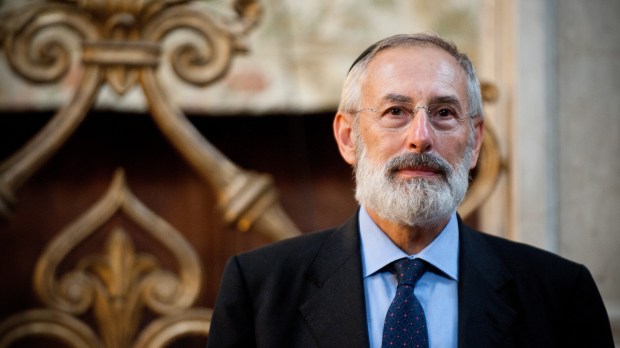ROME — When Pope St. John Paul II visited the Great Synagogue of Rome on April 13, 1986, the event marked history: he was the first pope to set foot in this particular Jewish place of worship. Rome’s Synagogue stands along the Tiber just four kilometers from the Vatican, yet it took almost two thousand years to cross it.
The visit of Pope Francis on January 17, six years to the day from Pope Benedict XVI’s, and almost 30 years from that of John Paul II, is turning into a custom and is surely a sign of a strengthening friendship.
“The open road of friendship and struggle against every form of intolerance stands at the heart of previous visits,” chief rabbi, Riccardo Di Segni, recently told Aleteia. “One doesn’t stop on this road. One doesn’t go back but goes forward.” However, there is also another very important significance to the visit: “It plunges us into the reality of our times, which are so very sad due to the resurgence of violence inspired by religion. The fact that representatives of two major religions are meeting in peace is in complete contrast to other worrying signals.”
“Our Beloved and Elder Brothers”
In 1986, Robbi Elio Toaff — who for half a century served as Rome’s chief rabbi and played a leading role in dialogue — welcomed Pope John Paul II to Rome’s Synagogue. In his address, the pontiff called the Jews “our beloved brothers” and “our elder brothers.”
Di Segni admitted that he is not particularly fond of the expression. “On the one hand, it is a very beautiful expression, undeniably so, because it underscores the relationship of brotherhood and the relation of antiquity to that brotherhood. On the other hand, from a strictly biblical and theological point of view, the theme of being the elder brother carries with it connotations of being the evil brother, the one who is lost, like Cain or Esau. They are all negative examples and people who ultimately were lost. This is related to the theological issue — which affects few people — of whether the Jewish people have lost their birthright, and lost this to a replacement.”
The theory of replacing Christians for the Jewish people as the “Chosen People” of God was definitively set aside in the documentThe Gifts and the Calling of God are Irrevocable (Rom. 11:29). The reflection was published on December 10, 2015, by the Commission for Religious Relations with the Jews, on the 50th anniversary of Nostra Aetate (n. 4), the Vatican II declaration which opened dialogue between the two faiths.
“The statement made by the Catholic Church is important,” Rome’s Chief Rabbi said regarding the prospects for Jewish-Christian dialogue, “because it summarizes, from a theological perspective, fifty years of work carried out mainly by the Catholic Church, but always listening the Jewish point of view. We have a great challenge ahead of us, which is to be committed and engaged and to show, through our friendship, a sign of up-building and enrichment in our societies, and in the societies around us. This is our great task in the years ahead.”
The Shoah: A Warning for Our Time
The Jewish community in Rome, which is the most ancient in the diaspora, is awaiting Pope Francis’ visit with great anticipation. It’s said that the Temple will be “at full capacity.”
During his visit, the pope will stop in front of the memorial commemorating October 16, 1943, when the SS invaded Rome’s Jewish Ghetto and deported 1,024 Jews to the extermination camp in Auschwitz, a symbol of the tragic reality of the Holocaust.
“Its meaning is an utter mystery, and it defies reason,” Di Segni has said in the past. “It was an enormous crime that came at the culmination of a history of persecution, intolerance and suffering,” he told Aleteia, “and it stood out not only for its sheer size but also for its systematic planning and use of technology.”
“From this perspective, it is a unique horror and a huge warning to the whole of our society, which can again fall into these errors,” he said.
The history of the Jewish people can be a warning in our own day, which is marked by renewed violence in the name of religion. It can also suggest how to deal with the phenomena of migration and coexistence between different cultures and faiths.
“Our history offers an extremely important model of diversity in an urban context based on integrating and enriching it,” Rome’s chief rabbi confirmed. “Integration is the necessary condition for coexistence. This is what we need to work on, because emigration without integration is doomed to fail tragically.”
Translated from the Italian by Diane Montagna.

